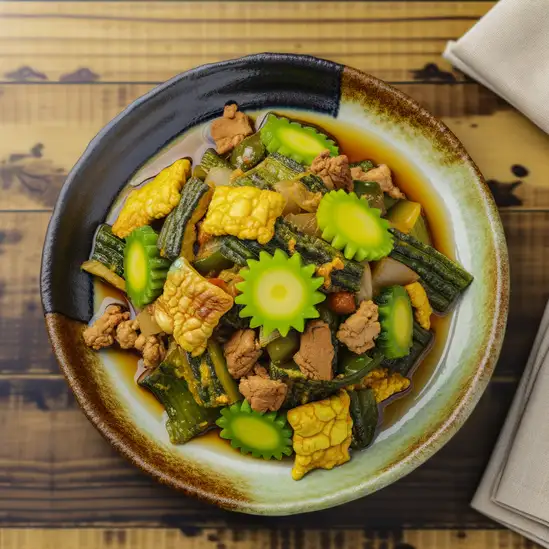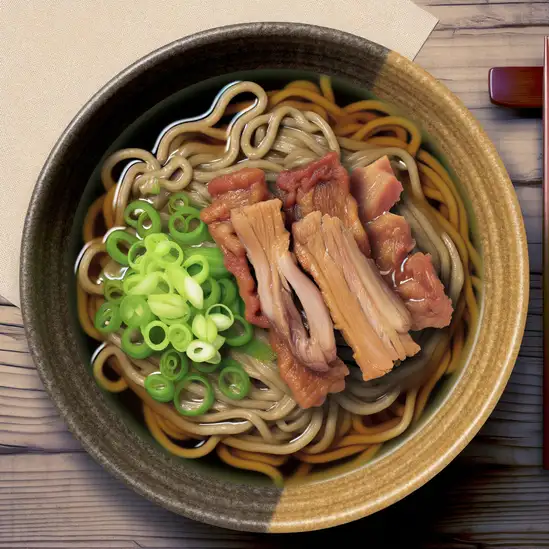



Okinawa feels like stepping into a different rhythm of life—laid-back yet vibrant,where the ocean breeze carries a salty sweetness and the hum of cicadas blends with distant laughter. The island’s turquoise waters stretch endlessly,inviting you to dive into coral reefs teeming with colorful fish or simply sink your toes into soft,white sand. As you wander through the streets,the scent of sizzling Okinawan pork and sweet purple sweet potatoes wafts from local eateries,tempting you to try dishes that are both comforting and delightfully unfamiliar. What really sets Okinawa apart is its unique blend of cultures. You’ll notice the Ryukyu influence in the architecture,the traditional music played on sanshin instruments,and the warm smiles of locals who seem genuinely proud of their heritage. It’s a place where ancient traditions coexist with a relaxed island vibe,creating a welcoming atmosphere that feels both timeless and refreshingly alive. Beyond the beaches,there’s a quiet magic in the island’s lush forests and historic sites,like Shuri Castle,where you can almost hear whispers of the past. Whether you’re savoring a cup of jasmine tea in a cozy café or watching the sun dip below the horizon,Okinawa invites you to slow down,breathe deeply,and soak in a culture that celebrates life’s simple,beautiful moments.
The information on this page is currently being reviewed by Tripkliq and should be used as a guide only
Eng word: Hello
Eng pronunciation: Konnichiwa
Local language: こんにちは
Eng word: Goodbye
Eng pronunciation: Sayōnara
Local language: さようなら
Eng word: Thank you
Eng pronunciation: Arigatō
Local language: ありがとう
Eng word: How much
Eng pronunciation: Ikura
Local language: いくら
Eng word: Toilet
Eng pronunciation: Toire
Local language: トイレ
Eng word: Help me
Eng pronunciation: Tasukete
Local language: 助けて
Eng word: Yes
Eng pronunciation: Hai
Local language: はい
Eng word: No
Eng pronunciation: Iie
Local language: いいえ
Eng word: Excuse me
Eng pronunciation: Sumimasen
Local language: すみません
Okinawa was once the center of the Ryukyu Kingdom, an independent kingdom that thrived from the 15th to the 19th century. The kingdom was known for its maritime trade and unique culture, which blended influences from China, Japan, and Southeast Asia.
Shurijo Castle, a UNESCO World Heritage Site, was the royal palace of the Ryukyu Kingdom. It served as the political, economic, and cultural heart of the kingdom and is a symbol of Okinawa's rich history.
Okinawa is home to several ancient gusuku (castle) sites, such as Nakagusuku and Katsuren Castles. These sites offer a glimpse into the island's feudal past and are also recognized as UNESCO World Heritage Sites.
Okinawa is the birthplace of karate, a martial art that has gained worldwide popularity. The island's unique blend of Chinese and indigenous martial arts practices led to the development of this disciplined and respected form of self-defense.
Traditional Ryukyu dance is an important cultural heritage of Okinawa. These dances, often performed in colorful costumes, were originally created for the entertainment of the Ryukyu Kingdom's royal court and are still performed today.
Okinawan music, characterized by the use of the sanshin (a three-stringed instrument), has a distinct sound that reflects the island's unique cultural heritage. Traditional folk songs and modern Okinawan pop music continue to be popular both locally and internationally.
The Okinawa Churaumi Aquarium, one of the largest aquariums in the world, showcases the rich marine life of the region. It features a massive tank that houses whale sharks, manta rays, and other fascinating sea creatures.
The Okinawa Peace Memorial Park commemorates the Battle of Okinawa, one of the largest battles of World War II. The park serves as a place of reflection and remembrance, promoting peace and understanding.
Okinawan cuisine is renowned for its unique flavors and healthy ingredients. Dishes like goya champuru (bitter melon stir-fry) and Okinawa soba (noodle soup) reflect the island's culinary traditions and are a must-try for visitors.
In Okinawa, the most common Power Adaptor is Type A, Type B.



A stir-fry dish made with bitter melon, tofu, pork, and various vegetables. It is a popular and iconic dish in Okinawa known for its unique flavor.

A dish made with braised pork belly simmered in soy sauce, sugar, and awamori (Okinawan distilled spirit). The pork becomes tender and flavorful, making it a must-try dish in Okinawa.

A noodle dish consisting of wheat noodles in a broth topped with stewed pork ribs, green onions, and red pickled ginger. It is a comforting and delicious dish that is popular among locals and visitors alike.

A fusion dish that combines elements of Tex-Mex cuisine with Japanese flavors. It consists of seasoned ground beef, lettuce, tomatoes, and cheese served on a bed of rice. It is a popular dish in Okinawa and can be found in many restaurants and cafes.
Tokyo feels like stepping into a living,breathing mosaic where tradition and futurism dance side by side. The moment you arrive,you’re swept up in a vibrant energy that hums through neon-lit streets and quiet temple gardens alike. Imagine the buzz of Shibuya Crossing,where hundreds of people move in perfect chaos,the air tinged with the scent of sizzling street food and fresh cherry blossoms in spring. It’s a city that never quite sleeps,yet somehow offers pockets of serene calm if you know where to look.
Walking through Tokyo,you’ll hear a symphony of sounds—from the rhythmic clatter of trains to the soft murmur of locals chatting over steaming bowls of ramen. The city’s character is a fascinating blend of meticulous order and playful creativity. You can find centuries-old shrines nestled between sleek skyscrapers,and quirky themed cafes that feel like stepping into another world. The taste of Tokyo is unforgettable too—whether it’s the delicate umami of sushi at a tiny neighborhood spot or the comforting warmth of matcha-flavored sweets.
What makes Tokyo truly unique is how it embraces contrasts without missing a beat. It’s a place where you can lose yourself in sprawling shopping districts,then find quiet reflection in a moss-covered garden. The people,warm and respectful,add a layer of kindness that makes the city feel welcoming despite its size. If you’re curious,open-hearted,and ready to explore,Tokyo will surprise you at every turn and leave you with stories you’ll want to share again and again.
Kyoto feels like stepping into a living painting where every corner whispers stories from centuries past. The moment you wander beneath the vermilion torii gates of Fushimi Inari,or stroll through the serene bamboo groves of Arashiyama,you’re wrapped in a calm that’s both timeless and deeply alive. The air carries a subtle mix of incense from ancient temples and the delicate scent of cherry blossoms or autumn leaves,depending on the season. It’s a city that invites you to slow down,to listen to the soft rustle of kimono fabric on narrow streets and the gentle clink of tea cups in quiet teahouses.
Kyoto’s charm lies in its seamless blend of tradition and everyday life. You’ll find monks in saffron robes crossing paths with students on bicycles,and artisans crafting pottery or folding origami with meticulous care. The city’s rhythm is gentle but purposeful,like the steady flow of the Kamo River where locals gather to chat or enjoy a picnic. And the food—oh,the food! From delicate kaiseki meals that feel like edible art to street stalls offering warm yatsuhashi sweets,every bite tells a story of place and season.
What makes Kyoto truly unforgettable is how it feels like a sanctuary for the senses and the soul. Whether you’re watching the sun set behind golden temple roofs or sipping matcha in a quiet garden,there’s a profound sense of connection—to history,nature,and the simple beauty of everyday moments. It’s a city that stays with you long after you leave,quietly inviting you to return.
Imagine stepping into a city that buzzes with an infectious energy,where neon lights splash vibrant colors across the night sky and the air hums with laughter and chatter. That’s Osaka for you—a place that feels alive in the most welcoming way. It’s not just a city; it’s a warm,spirited friend who invites you to dive into its lively streets,where every corner tells a story. The scent of sizzling takoyaki and okonomiyaki wafts through the air,tempting you to stop and savor the rich,comforting flavors that define Osaka’s food culture.
Walking through Dotonbori,you’ll hear the rhythmic clatter of chefs flipping pancakes on hot griddles,mixed with the playful calls of street vendors. The city’s character shines in its blend of old and new—ancient castles stand proudly near bustling shopping arcades,and traditional theaters share space with quirky,modern cafes. People here are famously friendly and down-to-earth,always ready with a smile or a helpful tip,making you feel instantly at home.
What makes Osaka truly special is its unapologetic joyfulness. It’s a city that celebrates life through its food,festivals,and everyday moments. Whether you’re savoring a bowl of rich ramen,exploring vibrant markets,or simply soaking in the neon-lit riverbanks,Osaka wraps you in a warm embrace that lingers long after you leave. Trust me,once you experience its spirited charm,you’ll find yourself dreaming of coming back.
If you ever find yourself in Japan during winter,Sapporo-shi is a city that wraps you in a cozy,spirited embrace unlike anywhere else. Imagine crisp,snowy streets lined with softly glowing lanterns,the air tinged with the scent of pine and sizzling street food. The city hums with a lively yet laid-back energy—locals chatting over steaming bowls of miso ramen or clinking glasses of rich,locally brewed beer. It’s a place where modern city life meets nature’s quiet beauty,all under a sky that often blushes pink at sunset.
Walking through Odori Park,you’ll hear the crunch of fresh snow beneath your boots and catch glimpses of intricate ice sculptures shimmering in the cold air,especially during the famous Snow Festival. The architecture is a charming mix of clean,contemporary lines and historic European influences,giving the city a unique personality that feels both familiar and refreshingly new. Cafés spill warm light onto the streets,inviting you in to savor Hokkaido’s creamy dairy treats or a perfectly brewed cup of coffee.
What really makes Sapporo special is its genuine warmth—people here are friendly without being overbearing,proud of their city’s rich culture and natural bounty. Whether you’re wandering through the bustling Nijo Market tasting fresh seafood or hiking nearby trails that open up to breathtaking views,Sapporo feels like a place that invites you to slow down,breathe deeply,and savor every moment.
If you find yourself wandering through Fukuoka-shi,you’ll immediately notice a refreshing blend of vibrant city life and laid-back coastal charm. The air carries a subtle saltiness from the nearby sea,mingling with the enticing aroma of street food stalls sizzling with fresh yakitori and steaming bowls of Hakata ramen. It’s a city that hums with energy but never feels overwhelming—like a close-knit community that’s just big enough to surprise you at every corner.
Walking through the bustling Nakasu district at night,neon lights flicker against the river’s calm surface,while laughter and chatter spill out from cozy izakayas. The city’s pulse is warm and inviting,with locals who are proud yet unpretentious,always ready to share a story or recommend their favorite spot. Fukuoka’s rich history peeks through in its temples and shrines,but it’s the modern art galleries and lively festivals that show how the city embraces both tradition and innovation.
What really sets Fukuoka apart is its pace—fast enough to keep you intrigued,slow enough to savor. Imagine sitting by the waterfront,a gentle breeze brushing your face,as you sip on a cold yuzu drink and watch fishing boats bobbing gently. It’s a place where you can dive into Japan’s culinary delights,explore vibrant markets,and still find quiet moments to just breathe and soak it all in. Trust me,Fukuoka feels like a warm welcome you didn’t know you needed.
If you ever find yourself craving a place where the ocean breeze carries a hint of tropical warmth and the streets hum with a laid-back island rhythm,Naha Shi in Okinawa is where you want to be. Walking through its bustling markets,you’ll catch the vibrant colors of fresh fruits and the spicy aroma of Okinawan cuisine wafting through the air—think sweet purple sweet potatoes and tangy goya stir-fries that tease your taste buds. The city feels alive but never rushed,like it’s inviting you to slow down and savor every moment.
Naha’s charm lies in its blend of old and new. You can wander through the historic Shuri Castle grounds,where the echoes of Ryukyu Kingdom royalty still seem to linger,then stroll just a few blocks to modern cafes and quirky shops that pulse with youthful energy. The locals are warm and welcoming,often eager to share stories or recommend their favorite spots for a refreshing sata andagi (Okinawan doughnut) or a cup of jasmine tea.
As the sun dips low,the harbor lights twinkle against the backdrop of turquoise waters,and the gentle sound of waves mingles with distant laughter from street performers. It’s a city that feels like a gentle embrace—rich in culture,alive with flavor,and wrapped in the kind of peaceful energy that makes you want to stay a little longer,just to soak it all in.
Tourists may be lured into booking non-existent or substandard accommodations through fake websites or listings.
Individuals posing as official tour guides may offer their services and charge high fees for subpar or incorrect information.
Some taxi drivers may take advantage of tourists by overcharging or taking longer routes to increase the fare.
Certain restaurants may have dual pricing, charging tourists significantly more than locals for the same dishes.
Vendors may sell counterfeit or low-quality goods at inflated prices, claiming they are authentic or high-quality items.
Japan has very strict drug laws, and this includes Okinawa. The possession, use, or trafficking of illegal drugs is severely punished, with strict penalties including long prison sentences and heavy fines. Even small amounts of drugs can lead to arrest and prosecution. Prescription medications that are legal in other countries may also be restricted or require special documentation in Japan. Tourists should ensure they are fully aware of these regulations and carry necessary prescriptions and documentation for any medications they bring into the country.
In Okinawa, as in the rest of Japan, smoking is regulated to ensure public health and safety. Smoking is generally prohibited in many public places, including restaurants, bars, and public transportation. Designated smoking areas are available in some public spaces, and it is important to use these areas to avoid fines. Additionally, smoking while walking on the streets is often discouraged or banned in certain areas to prevent littering and secondhand smoke exposure.
Vaping is subject to similar regulations as smoking in Okinawa. Vaping is generally prohibited in non-smoking areas, including indoor public spaces and public transportation. Designated smoking areas may also allow vaping, but it is important to check local signs and regulations. Tourists should be mindful of these rules to avoid penalties.
What are other people saying about Okinawa?
Recent Social posts about Okinawa
There is nothing to show you for now.